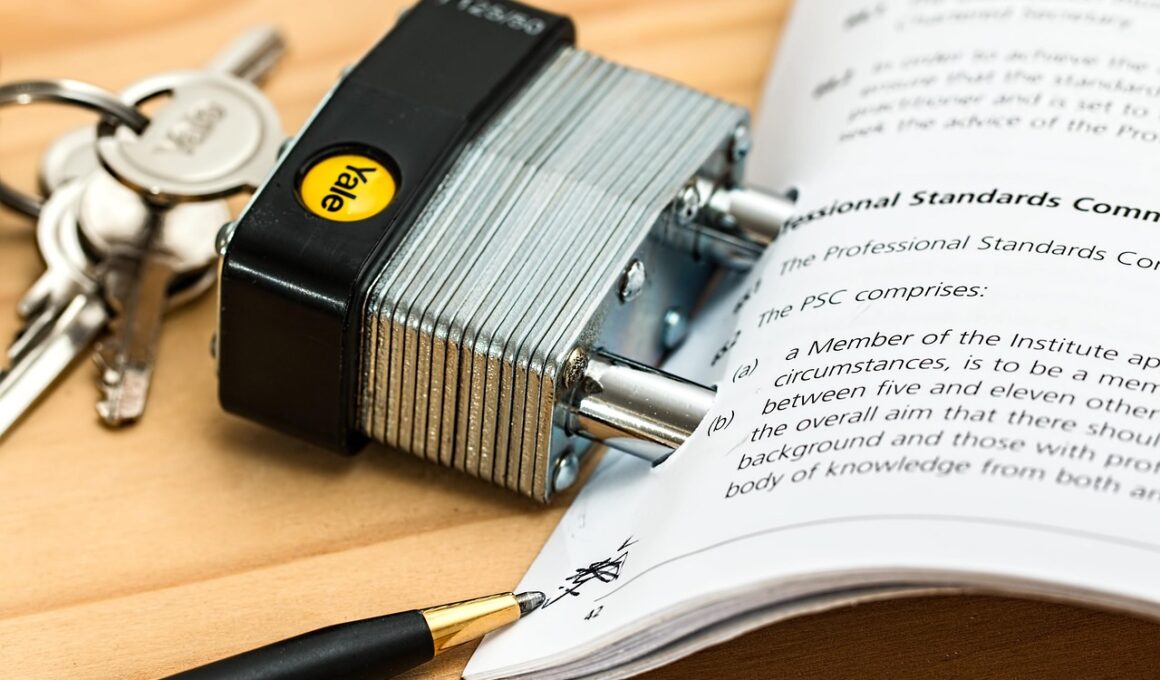The Process of Funding a Trust: A Step-by-Step Guide
Funding a trust can appear daunting, yet it is essential for effective estate planning. The fundamental step involves transferring assets into the trust, which grants the trustee control as outlined in the trust document. Firstly, assess which assets you aim to transfer. Commonly included assets consist of real estate, bank accounts, investment accounts, and personal property. Identifying these assets allows you to streamline the funding process. Secondly, accurately retitle assets in the name of the trust, requiring legal documentation to finalize the transfer. Real estate typically necessitates a property deed change, whereas financial accounts may demand bank or brokerage forms. Additionally, for personal property, consider conducting a formal assignment of ownership when necessary. Thirdly, inform family members and beneficiaries about the trust and its contents to prevent misunderstandings. It’s also prudent to keep meticulous records of every asset transferred, demonstrating clear ownership. Lastly, consult an estate planning attorney to ensure compliance with applicable laws and strategies. Ultimately, successful funding guarantees that your trust functions as intended, providing clear directions for asset management and distribution to beneficiaries in the future.
Once you’ve initiated the process of funding your trust, strive to understand specific types of assets to incorporate. Each asset type may involve unique steps and considerations. For instance, real estate often requires not only the deed change but also might benefit from a title search to assure clarity. Next, when converting bank accounts, be aware of policies regarding joint accounts; confirming how these are to be managed is paramount. With investment accounts, updating beneficiary designations to reflect the trust as the primary beneficiary avoids unnecessary estate tax complications later on. Additionally, stocks and bonds may necessitate physical certificates transferring, or you might need to contact a broker to execute the change in title accordingly. Certain accounts, including retirement accounts like IRAs, have strict rules regarding beneficiaries which merit careful review. After all assets have been aptly identified, transferred, and documented, it is vital to maintain ongoing communication with your attorney. Regular reviews of your trust will ensure it can adapt to any significant life events or changes in financial status that may warrant revisions. As you structure your estate, your documents must mirror your intentions accurately.
Understanding the Importance of Funding a Trust
Properly funding a trust is pivotal, ensuring that your estate plan works seamlessly upon death or incapacitation. An unfunded trust, conversely, could fall short of its intended purpose, leading to delays or even family disputes. Emphasizing the need for funding, many individuals overlook this element after establishing their trust, only to encounter problems later. Without assets transferred, beneficiaries may be left in limbo, potentially undermining your outlines for asset distribution. Furthermore, in some states, unfunded trusts may be treated differently by probate courts, potentially complicating your estate’s resolution process. To avoid these issues, it is vital to plan ahead and understand how assets will interact with your trust appropriately. Those given authority as trustee must have clear insights into their responsibilities concerning managing and distributing the assets held within the trust. Ensure that your trust accurately conveys your wishes and covers all necessary asset categories. Setting up periodic audits to verify that your trust remains funded may yield peace of mind. This awareness of the trust funding process empowers you and maintains the ultimate purpose of clarity and control over your estate.
Considering life changes is an integral aspect of managing a trust. Events such as marriage, divorce, or the birth of a child could necessitate modifications to the trust. Following substantial life changes, diligently reviewing your estate plan and the trust funding is recommended. For instance, upon marriage, you might consider including your spouse as a beneficiary or co-trustee. Conversely, in the unfortunate event of divorce, it may be wise to revise the trust to eliminate the spouse as a beneficiary and reevaluate the nomination of successor trustees. The birth or adoption of children or grandchildren compels careful thought about asset distribution and roles within the trust. Moreover, updating documents to reflect these life events and any newly acquired assets should remain a priority. Additionally, minor beneficiaries often require guardianship provisions, ensuring their interests are properly safeguarded. Keeping beneficiaries informed will also help establish clear expectations. Regular meetings with your estate planning attorney can assist in steadily adapting your trust to evolving circumstances. Ultimately, embracing flexibility in your trust significantly increases the likelihood of fulfilling your final wishes.
Common Mistakes to Avoid When Funding a Trust
Many individuals make common mistakes that can hinder the funding process of their trust. One prevalent error is failing to transfer the title of assets properly into the trust, leading to disputes during the probate process. Proper documentation is crucial here; skipping this critical step can render a trust ineffective. Other individuals fail to fund the trust immediately after its creation, which creates potential vulnerabilities to estate taxes and lengthy court proceedings. Doing so will ensure that assets are immediately protected under the trust umbrella. Additionally, relying solely on verbal agreements rather than written documentation significantly increases miscommunication risks amongst family members and potential heirs. Always create and keep up-to-date records demonstrating asset ownership. Lastly, overlooking the importance of regular reviews of the trust can lead to detrimental results. As financial situations and legal environments shift, your estate planning strategies should reflect these changes seamlessly. If you are unsure about the funding process, seek assistance from a qualified estate planning professional. By avoiding these pitfalls, you can enhance the likelihood that your trust fulfills its intended purpose, preserving your assets for future generations.
As you navigate the complexities of trust funding, consider the implications of taxes and government regulations on your estate. Understanding possible tax liabilities when moving assets into your trust can save your estate from unnecessary financial burdens. For instance, certain gift taxes may apply if the transferred assets exceed a specific threshold. Be meticulous in ensuring your trust is drafted appropriately, particularly when it comes to tax exemptions or deductions. Additionally, research state laws that could affect your trust’s financial implications. Some states have individual requirements surrounding asset transfers and taxes that can further complicate your plans. Seeking guidance from a financial advisor or tax professional is invaluable in ingraining these considerations into your planning. File all necessary documents and forms with relevant authorities to maintain compliance. Also, stay informed about any changes in tax legislation that could affect your estate plan; reactions to these changes may even necessitate adjustments to your trust. Through diligent review and proactive management, you can ensure that your trust continues to operate efficiently, functioning as a robust tool for effective estate planning.
Finalizing the Trust Funding Process
Finalizing the funding process involves comprehensive checks to confirm all assets are correctly placed in the trust. After transferring assets, have a checklist to guide you through the completion of documentation, ensuring everything is seamlessly concluded. Steps such as acquiring new asset titles, confirming receipts for transferred stocks, and updating insurance policies are all pivotal. Furthermore, consider professional evaluations of high-value assets like real estate and collections to ensure proper valuation and tax compliance. Once you’ve completed the necessary transfers and documentation, revisit and communicate with your chosen trustee. Being transparent with your trustee reinforces their understanding of your desires and intentions. An explicit dialogue about how you envision your estate to be managed enhances clarity. Remain engaged with your estate planning attorney, ensuring that trust provisions and asset inventories are up-to-date. Beyond the initial funding, maintain an ongoing review schedule to adapt to any future changes in assets or desires. The more organized you are, the less likely complications arise when carrying out your wishes after your passing.
Completing the trust funding process signifies a significant milestone in your estate planning journey. You can effectively safeguard your assets and clarify your intentions for future generations. A fully funded trust ensures that your beneficiaries receive their designated assets promptly and efficiently. Moreover, it provides your loved ones with peace of mind, reducing any potential disputes or confusion surrounding asset distribution. Also, understanding the role of professionals involved in this process, such as attorneys and financial advisors, can enhance the effectiveness of your trust. Their support can be a valuable asset, guiding you through complex legal and financial terrains. Lastly, remember that effective estate planning does not end with funding; be proactive about regular contract reviews. Remain adaptable to the evolving needs of your family and assets. Regular communication with your trustee and beneficiaries can also ensure that everyone is on the same page. Ultimately, a funded trust is a robust mechanism to maintain control over your wealth while ensuring it serves its intended purpose long into the future. Embracing this process with diligence ensures your estate planning poses no surprises but has clarity and coherence.





